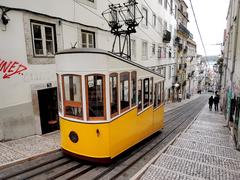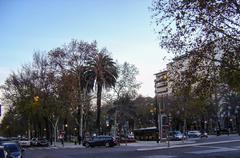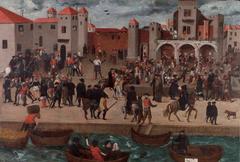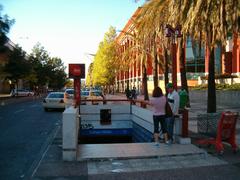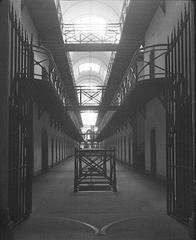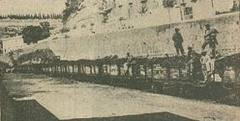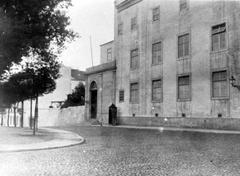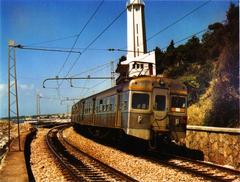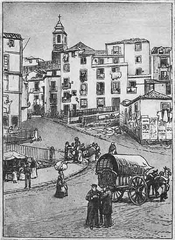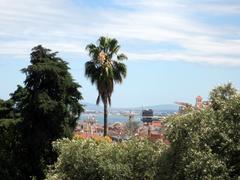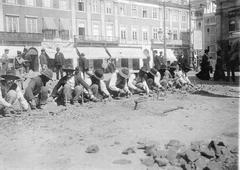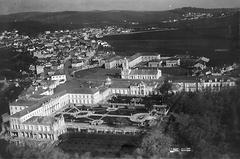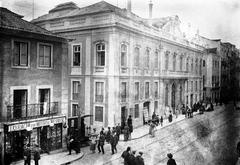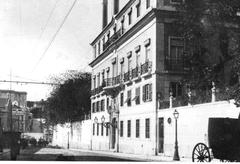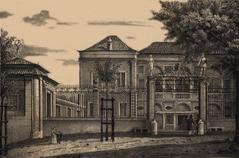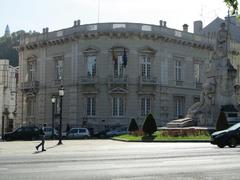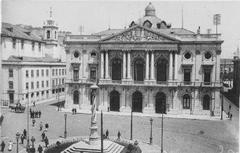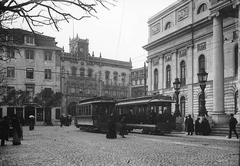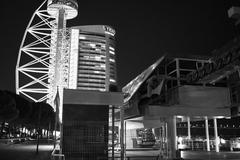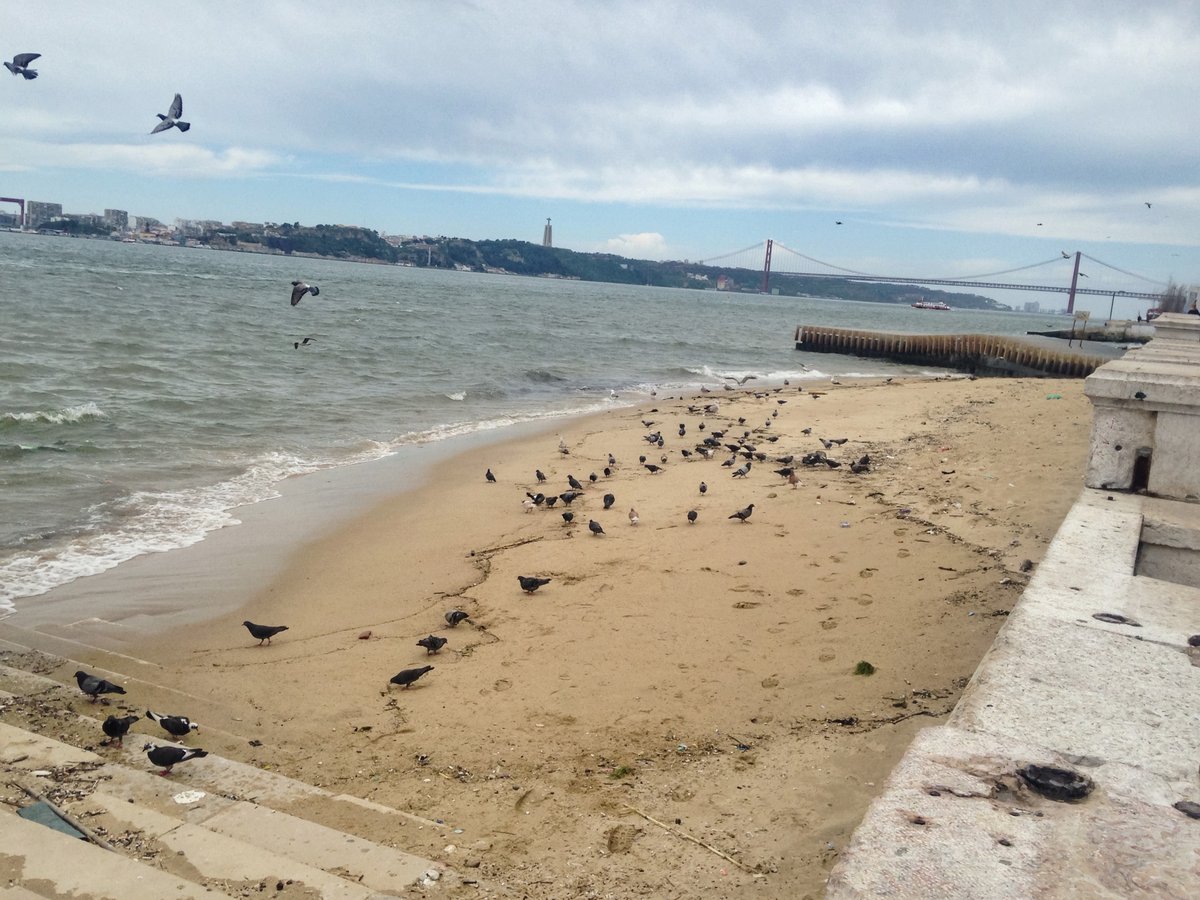
Visiting Cais das Colunas: Hours, Tickets, and Historical Insights
Date: 18/07/2024
Introduction
Welcome to Cais das Colunas, one of Lisbon’s most iconic historical landmarks. Situated along the magnificent waterfront of Praça do Comércio, this site offers visitors a unique glimpse into Portugal’s rich maritime heritage and its transformative journey through the ages. Cais das Colunas, or the ‘Columns Wharf,’ serves as both a picturesque gateway to the city and a symbolic tribute to Lisbon’s enduring spirit. The wharf’s history is deeply entwined with the city’s evolution, from its golden age of discovery to the devastating 1755 earthquake, and the subsequent rebirth under the Marquis of Pombal. Today, Cais das Colunas stands as a vibrant public space, drawing locals and tourists alike to its scenic steps and panoramic river views. This guide will delve into the historical significance, visitor information, and the contemporary cultural relevance of this remarkable site, ensuring you make the most of your visit to Cais das Colunas. For more detailed travel tips and historical context, continue reading to uncover the layers of stories that make this landmark a must-visit in Lisbon (source).
Table of Contents
- Introduction
- A Storied Past - Cais das Colunas and Lisbon’s Transformation
- Cais das Colunas Today - A Place of Leisure and Reflection
- Visitor Information
- Significance of Cais das Colunas
- Conclusion
- FAQ
A Storied Past - Cais das Colunas and Lisbon’s Transformation
Cais das Colunas, or the “Columns Wharf,” stands as a grand gateway to Lisbon, a testament to the city’s resilience and its historical connection to the sea. More than just a picturesque waterfront, it holds layers of stories, reflecting Portugal’s fluctuating fortunes and Lisbon’s evolution through the ages.
From Royal Embarkation Point to Symbol of Rebirth
The history of Cais das Colunas is intricately woven with that of Lisbon’s Terreiro do Paço, also known as Praça do Comércio (Commerce Square). This grand plaza, one of the most majestic in Europe, was once the maritime façade of the Royal Palace. Cais das Colunas, with its prominent position on the Tagus River, served as the palace’s grand entrance from the water.
-
16th-18th Centuries - A Royal Gateway: During Portugal’s Golden Age of Discovery, Cais das Colunas witnessed the arrival and departure of explorers, dignitaries, and traders. Imagine the bustling activity as ships laden with spices, silks, and treasures from the far reaches of the Portuguese empire docked at the wharf. This was the era when Lisbon thrived as a global hub, and Cais das Colunas was at the heart of its maritime power.
-
1755 - Tragedy and Transformation: The devastating Lisbon earthquake of 1755 dramatically altered the city’s landscape. The earthquake and subsequent tsunami destroyed much of Lisbon, including the Royal Palace that once stood on the site of present-day Praça do Comércio. Cais das Colunas, too, suffered significant damage.
-
18th Century - Reconstruction and a New Era: Following the earthquake, the Marquis of Pombal, a powerful minister, spearheaded the reconstruction of Lisbon. Praça do Comércio was redesigned as a symbol of the city’s rebirth, with a focus on commerce and rationality. Cais das Colunas was rebuilt as part of this grand plan, its two majestic columns, crowned with statues representing Glory and Valor, becoming a symbol of Lisbon’s resilience and ambition.
A Witness to History - From Dictatorship to Revolution
Cais das Colunas continued to be a focal point for significant events in Lisbon’s history:
- 20th Century - A Stage for Political Change: In the 20th century, the square and the wharf witnessed periods of both dictatorship and revolution. It was here that the Estado Novo regime, led by António de Oliveira Salazar, held its rallies, attempting to project an image of strength and stability. However, Cais das Colunas also witnessed the Carnation Revolution of 1974, a peaceful coup that ended the dictatorship and ushered in democracy.
Cais das Colunas Today - A Place of Leisure and Reflection
Today, Cais das Colunas is a vibrant public space, a favorite spot for both locals and tourists. The steps leading down to the Tagus River offer stunning views of the river, the 25 de Abril Bridge, and the Cristo Rei statue on the south bank.
-
A Gateway to Exploration: Ferries and river cruises depart from Cais das Colunas, offering opportunities to explore the Tagus River and its surrounding areas.
-
A Place of Leisure and Gathering: The area around Cais das Colunas is lined with cafes and restaurants, making it an ideal spot to relax, soak in the atmosphere, and enjoy the views. Street performers and artists often add to the lively ambiance.
Visitor Information
Visiting Hours
Cais das Colunas is accessible to the public 24/7, making it a perfect spot for both early morning visits and late-night strolls.
Tickets
There is no admission fee to visit Cais das Colunas. However, fees may apply for specific ferry services and river cruises departing from the wharf.
Travel Tips
- Best Time to Visit: Early morning or late afternoon for the best lighting and fewer crowds.
- Nearby Attractions: Don’t miss Praça do Comércio, the Lisbon Story Centre, and the iconic Rua Augusta Arch.
- Accessibility: The area is generally accessible, with ramps and paved paths suitable for wheelchairs and strollers.
Special Events and Guided Tours
Keep an eye out for special events such as waterfront concerts and historical reenactments. Guided tours are available and can provide deeper insights into the rich history of Cais das Colunas and its surroundings.
Photographic Spots
Capture the essence of Lisbon with photos of the majestic columns, the panoramic river views, and the vibrant street life around Cais das Colunas.
Significance of Cais das Colunas
Cais das Colunas stands as a powerful symbol of Lisbon’s enduring spirit. It represents:
-
Resilience: Its survival through earthquake, tsunami, and political upheaval speaks to the city’s ability to rebuild and adapt.
-
Transformation: From a royal embarkation point to a symbol of commercial power and now a vibrant public space, Cais das Colunas reflects Lisbon’s evolving identity.
-
Connection to the Sea: The wharf’s location on the Tagus River underscores Lisbon’s historical and cultural ties to the sea, a connection that continues to shape the city today.
Conclusion
Visiting Cais das Colunas is not just about admiring its architectural beauty; it’s about connecting with the layers of history embedded in its stones and experiencing the vibrant energy of modern Lisbon. Whether you’re a history buff, a casual tourist, or a local looking for a serene spot, Cais das Colunas offers something for everyone. Plan your visit today and immerse yourself in one of Lisbon’s most iconic historical sites.
FAQ
What are the visiting hours for Cais das Colunas?
Cais das Colunas is open to the public 24 hours a day, 7 days a week.
Is there an admission fee for Cais das Colunas?
No, there is no admission fee to visit Cais das Colunas.
Are there guided tours available?
Yes, guided tours are available and offer deeper insights into the historical significance of Cais das Colunas.
What nearby attractions should I visit?
Make sure to check out Praça do Comércio, the Lisbon Story Centre, and the Rua Augusta Arch.
Call to Action
For more information on Lisbon’s historical sites and to stay updated on upcoming events, download the Audiala mobile app or follow us on social media. Don’t forget to check out our other related posts for more travel tips and guides!
References
- Wikipedia contributors. (2024). Cais das Colunas. In Wikipedia, The Free Encyclopedia. Retrieved from https://en.wikipedia.org/wiki/Cais_das_Colunas





